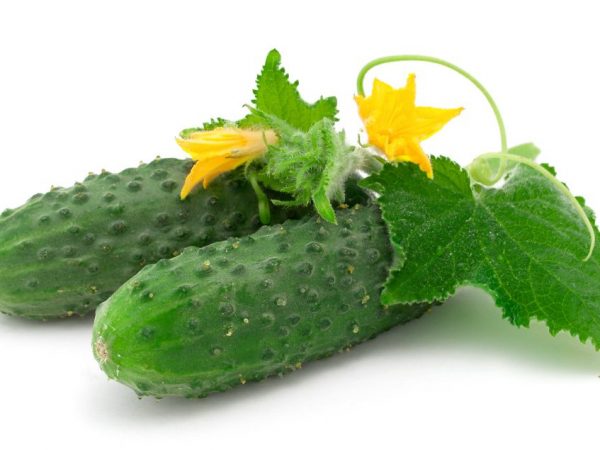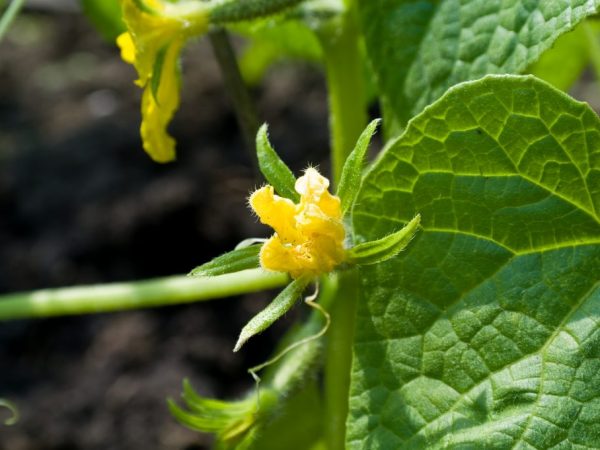Description of the Kibriya cucumber
Kibriya cucumber appeared on the world market relatively recently. For the entire existence of Kibriya f1 has been recognized as one of the best varieties of cucumbers. It is for this reason that every gardener wants to plant him on his site.

Description of the Kibriya cucumber
Characteristics of the variety
Cucumber Cybria f1 was bred in Holland. The company that filed the patent for this plant is considered to be Raik Tswan. At the beginning of the 21st century, this variety was entered into the National Register of the Russian Federation.
You can grow this variety in any part of the country. They can survive temperature extremes and behave well at low temperatures. It is best to plant in spring or winter.
Description of the plant
For the cucumber Kibriya f1, the description says that it has an average height. The height of the bush does not exceed 150 cm. At some points in time, with good care, the height of the bush reaches 200 cm. A rather large number of lateral shoots is formed on the stem, which may complicate the harvesting a little.
The female type of flowering predominates. About 5 ovaries can form in one node. The leaves are of medium parameters and have dark green shades. There is a slight roughness on the surface of the sheet.
Description of the fetus
The characteristic of the fruit is that it has an oval shape. Their size is small and does not exceed 9 cm. The surface of the peel is predominantly dark green. But, at high temperatures and a lot of sunlight, they may brighten a little. Also, these cucumbers are subject to yellowness with insufficient moisture.
There are small bumps on the surface of the peel, on which there are white blotches. The pulp is quite crispy and has no voids in it. There is no bitterness in it either. The weight of the fetus cannot exceed 100 g, even with good care. The taste of this variety is excellent. It belongs to the versatile crops that can be eaten raw or preserved for the winter.
Advantages and disadvantages
If we consider the description and characteristics of this variety, then the following positive qualities can be distinguished:
- fruits have unique commercial qualities;
- the taste is pleasant, without the presence of bitterness;
- versatility in use;
- good immunity to certain diseases;
- early maturation;
- to be transported over long distances, without loss of marketability and taste;
- high yields: from 1m2, gardeners can collect about 20 kg of excellent high quality fruits.
There are no drawbacks in this variety. If you believe in the reviews of gardeners, then this is just the perfect variety.
Growing

45 days after planting, the plant will begin to bear fruit.
Planting is carried out mainly with the help of seedlings. The thing is that the seeds will not be able to give as much yield as seedlings. For growing cucumbers, seedlings do not need to be treated with growth stimulants. This species already has excellent growth characteristics.Growing in a greenhouse is carried out in special containers, which should be at a distance of 40 cm from each other, because this allows the root system to remain safe and not damaged when transplanted into open ground.
The soil for cultivation is chosen that has a low acid-base balance. If it begins to exceed the mark of 6-6.5, then the soil should be treated with special preparations with a high lime content. The soil for planting should contain a small amount of peat, which will allow the crop to ripen even faster. It should also contain drugs such as Perlite or Vermiculite.
Until leaves appear on the seedlings, the humidity in the greenhouse should be more than 90%. As soon as the formation of the first sheets has begun, the humidity can be lowered to 80%. Watering of planting material should be carried out with water of a certain temperature. It should not be less than 20 ° C. Otherwise, the root system may freeze and not yield a crop.
As soon as you decide to plant cucumbers in the open field, you should wait until the soil warms up to 20 ° C. You should also loosen the soil a little so that a sufficient amount of air enters the root system. This will prevent rotting. No more than 2 plants should be planted on 1m2. After planting, 45 days should be counted. It is after this period of time that you can start harvesting.
Care
If you properly care for the Kibriya cucumber, then he will reciprocate. That is, only after high-quality and timely care, you can get high yield rates. The description of caring for this type of plant consists in correct and timely watering, feeding, loosening the soil and processing with disinfectants. Do not forget that it is important to form a bush.
Watering is carried out exclusively with water at room temperature. It should be installed only after draining of the soil has been noticed. This is best done using drip irrigation and in the evening. In this way, there is a greater likelihood that moisture will remain in the ground rather than evaporate.
After watering, it is important to loosen the top layer of the earth so that air can better flow to the root system. Top dressing consists in the use of preparations that contain a sufficient amount of potassium, phosphorus, magnesium and nitrogen. Organic substances that should also be used include droppings or humus. Harvesting is carried out daily. This allows you to increase your future harvest.
Prophylaxis
Kybriya f1 cucumbers have high rates of the immune system. That is why they cannot be exposed to common diseases. But, it is better not to dwell on this dignity and take preventive measures.
First of all, it is important to carry out a visual analysis of the state of the plant. As soon as the first signs of a problem have been noticed, it should be fixed. Insects can be removed by hand, but diseases require chemical control. Here drugs such as Fofatox or Araks will come to the rescue.
Conclusion
Despite the fact that this variety of cucumbers is relatively recent, it has every chance of gaining recognition around the world and receiving distinctive awards for its high indicators of taste and quality. Due to the fact that this species has a large number of advantages, all gardeners in the world are trying to grow it.


